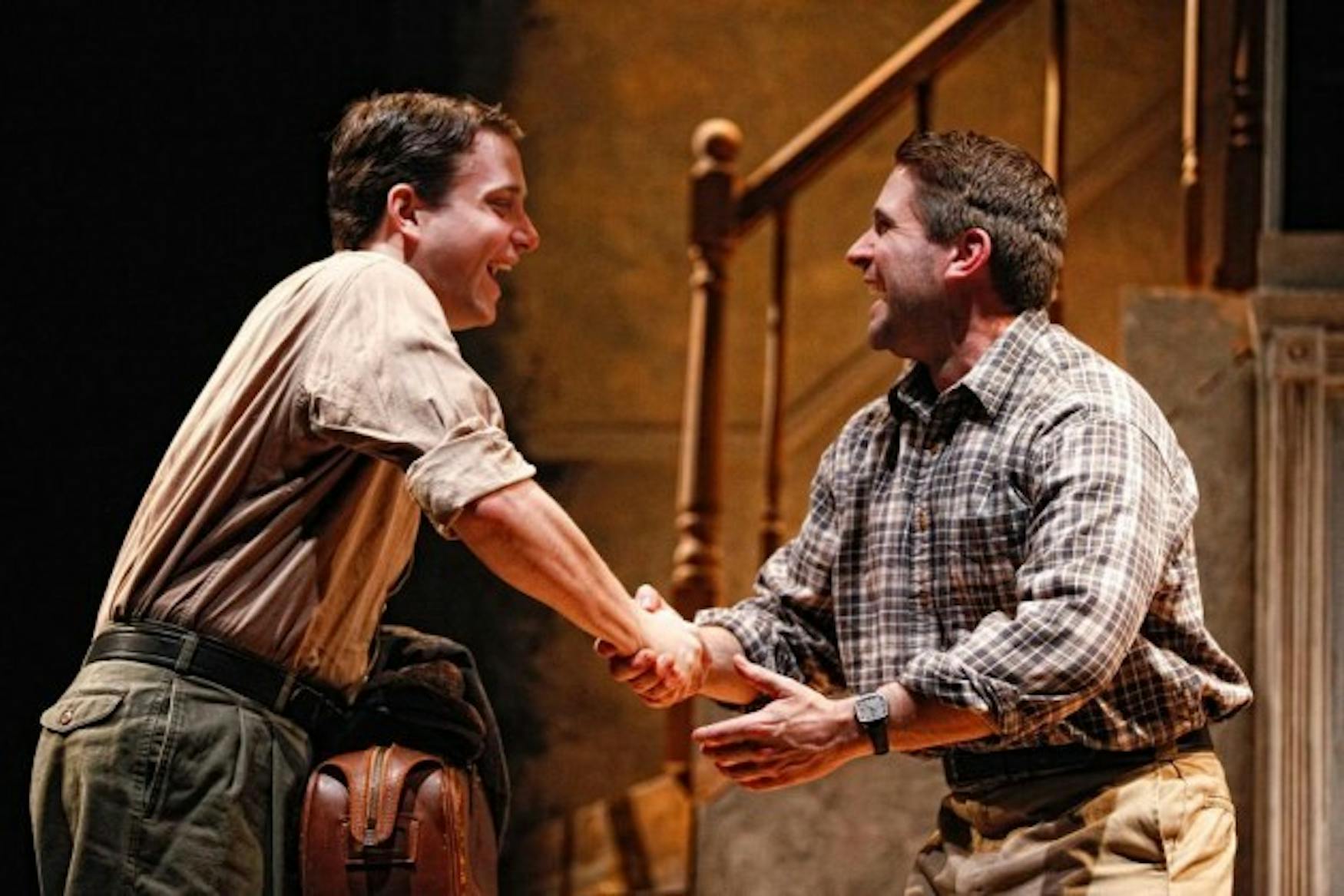BTC production resurrects the past
If you had walked into Spingold Theater Center's Laurie Theater this weekend, your first thought would have been "Toto, we're not in Waltham anymore!"
The Brandeis Theater Company successfully created a time capsule of drama this weekend with its production of A View from the Bridge, directed by Michael Hammond, who is a visiting professor of acting from the Boston University School of Theatre.
Written by Arthur Miller in 1955, the play covers a range of controversial topics, such as homophobia, immigration and gender roles. The set, visible to the audience before the start of the play, immediately brought the scenes into Red Hook, Brooklyn, N.Y. in the 1950s. Although the house was dirty and decrepit, the design was undoubtedly beautiful. The two-story structure, which cleverly resembled a bridge, served as the immobile main unit of the set throughout the production.
The action of the production revolves around an overly protective and possessive man, Eddie (Jonathan Young MFA '14). Eddie's family initially consists of his wife, Beatrice (Sara Schoch MFA '14) and niece, Catherine (Sarah Elizabeth Bedard MFA '14). Their family quickly grows, however, when Beatrice's Italian cousins illegally immigrate to the United States.
Marco (Sam Gillam MFA '14) and Rodolpho (Eddie Shields MFA '14) have snuck their way into the country to find work. What was supposed to be a civil environment turns into something much more complicated when Rodolpho and Catherine discover that they have romantic feelings toward each other.
Throughout the play, Eddie grows increasingly agitated with the situation. He seeks advice from Alfieri (Alex M. Jacobs MFA '14), a lawyer and the narrator of the production. He claims that Rodolpho "isn't right," alluding that he is gay and is only going after Catherine for citizenship. In the second act, his marriage deteriorates, his household turns violent and he even expresses incestuous feelings toward Catherine. All of his feelings lead to betrayal, anger and a shocking final scene.
It would be easy to portray the characters as simply angry and one-dimensional, but the director and actors succeeded in creating multi-faceted people. What was most impressive was how easy it was to simultaneously sympathize with and hate each character.
Although it was easy to hate Eddie for his jealous nature, something about Young's performance commanded pity. When Beatrice had the choice of acting independently or standing by her husband, her choice to support Eddie was justifiable. These actors, Young and Schoch, as well as Shields, were the most engaging members of the cast-
despite occasional fumbles and mistakes.
What highlighted the tragic nature of the play was the lighting and sound design. Long, ominous shadows grazed the stage and covered the actors. Menacing sounds and sharp lighting queues highlighted foreshadowing. Besides the more dramatic elements, the lighting and sound contributed to the convincing staging of the place and period. From dogs barking in the distance to a streetlight like atmosphere, the theater resembled Brooklyn in every form.
The costume design also helped establish the time period of the piece. Using mostly cuts and colors characteristic of the 1950s, the costumes emphasized the setting of the play. Although many of the colors were muted, most likely due to the economic status of the family, some of the characters started off vibrantly and became subdued throughout the production.
Catherine and Beatrice, for example, appeared first in bright colors, and although their happiness was reflected in their dress at times, their ultimate despair was evident from their costumes in the final scenes of the play.
Despite minor problems, the Brandeis Theater Company's production of A View from the Bridge was a successful telling of a captivating, thought-provoking and ultimately depressing story. The plot was distressing-even for Miller, a playwright known for his cynical realism.
Although the faces of the audience were somber as the theater emptied, their expressions could only mean one thing: the production staff and cast had created a truly magnificent experience that encouraged viewers to think critically and grow, not only as theater patrons, but also as human beings.
*



Please note All comments are eligible for publication in The Justice.